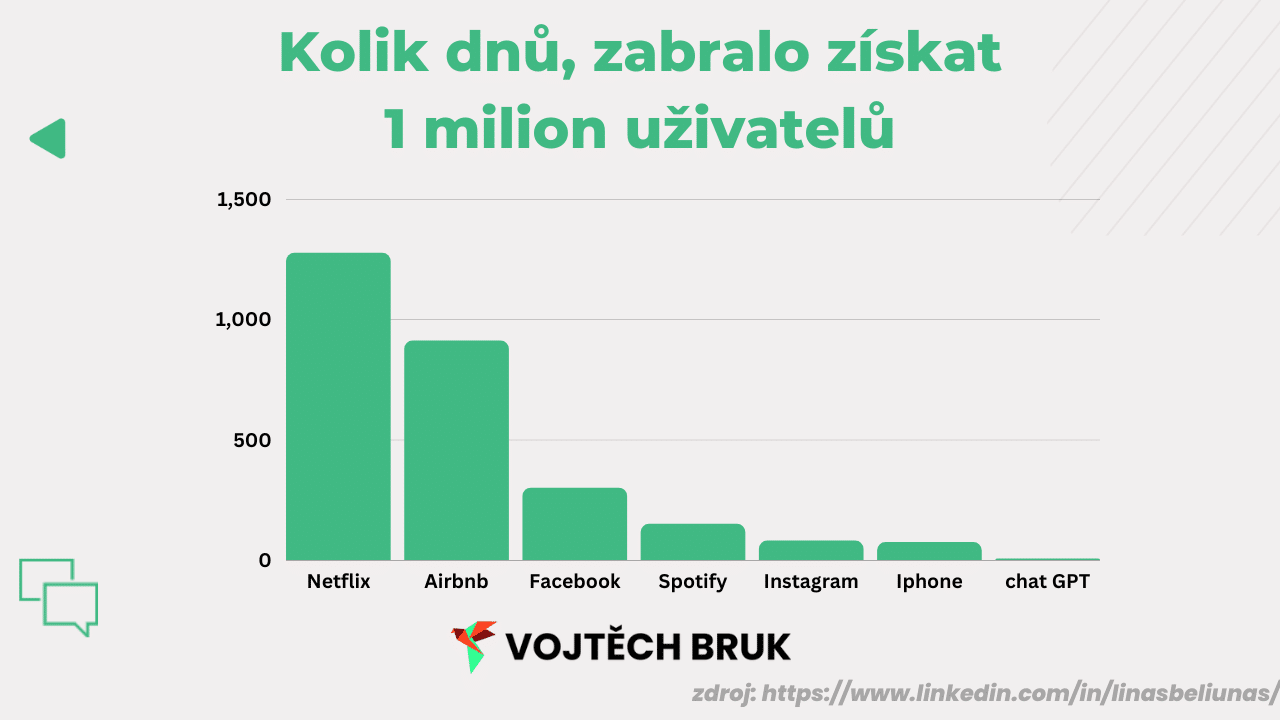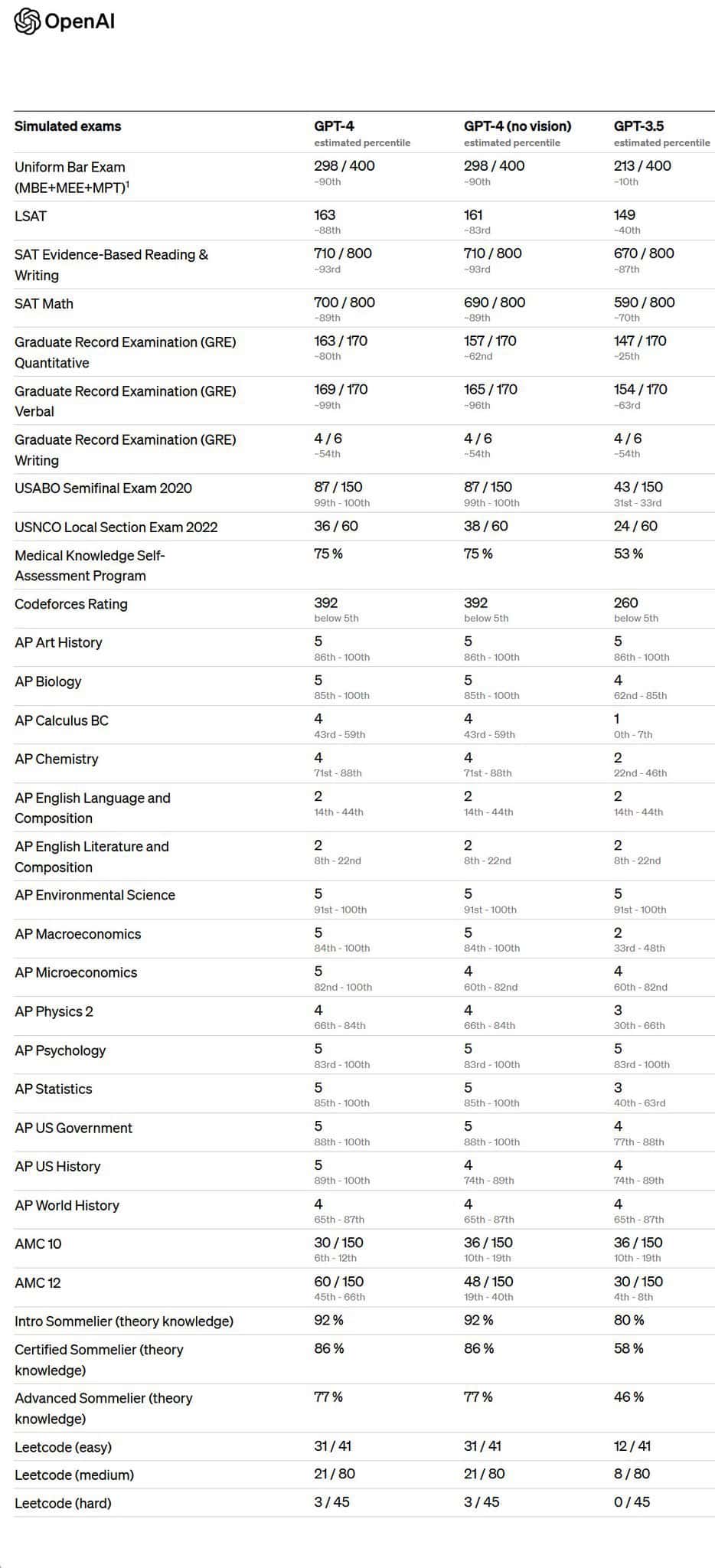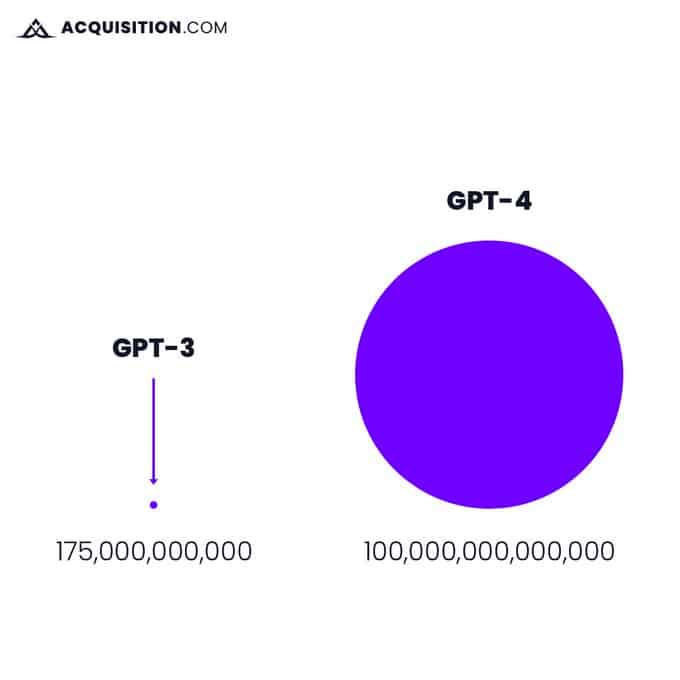Chat GPT is not only a technology that has picked up a million users, compared to other technologies, in an absurdly fast time (5 days versus Facebook’s 300 days):

It’s also a technology that is having a profound impact on what work looks like for many of us. Personally, I use Chat GPT daily for a variety of things:
And until now, I’ve been using the GPT-3.5 model.
On 3/15/2023, however, a new version of GPT-4 was released, which I have been using since its release.
It’s a big change, and we’ll look at exactly what it is below.
First impression of GPT-4
The first time I tried GPT-4 was as part of a video, which you can watch below:
The video is more of an amusing one, as it was my first time seeing the new model and I was just trying it out “live”.
However, I do use ChatGPT a lot and (relatively) frequently, so you can let me know what use you’re most interested in using with the form below, and I’ll be happy to prepare more structured and practical videos:
However, back to the main subject of this article: Is GPT-4 that different from GPT-3?
Main differences and improvements of GPT-4 over GPT-3
Yes, it is.
If you have no problems with English, you can watch the official presentation of the model:
But I’ll try to summarize the main points in text form here as well.
I asked Chat what he saw as the main advantages over its predecessor, mentioning:
- Higher capacity: GPT-4 could have even more neurons and layers, allowing it to process and learn from huge amounts of data. This could lead to a better understanding of the language and the ability to generate more relevant and understandable responses.
- Improved contextual capability: GPT-4 could be able to recognize and preserve the context of longer conversations, allowing it to better respond to user queries and build on previous interactions.
- Reducing bias and inaccuracies: GPT-4 could be designed with more emphasis on reducing bias and improving information quality. This would help the model provide more accurate and unbiased responses.
- Ability to work with data from more sources than just text: GPT-4 is able to, for example, recognize images and further work with this information.
- Improved personalization: GPT-4 might be able to better adapt to individual user needs and provide more personalized experiences and responses.
- Security and Ethics: The development of GPT-4 could include improved mechanisms to control malicious behavior and improve the ethical aspects of the model.
In practice, I found that the main difference I noticed was:
Overall, though, the changes may not strike you as “fantastic”. However, know that even improving by a third (that’s what it looks like to me so far from testing, totally subjectively) is a massive success due to how good GPT-3 already was.
In other words, if there was a possibility with version 3.5 that it could help with certain activities, version 4, I believe, can already replace many “entry-level” workers and support staff in the online world.
Evidence can be seen in how GPT-4 performed against its predecessor in college standardized tests:

So has GPT-4 lived up to expectations?
Minimally, this one definitely has.
In the first version of this article, I wrote that I actually expect GPT-3 to have:
- better handling of facts/factual correctness;
- better mastery of semantics;
- a much broader field of expertise.
These expectations have been met (the pictures are a bonus for me) and I look forward to testing the model in practice.
Who is the GPT-4 version available for and how much does it cost?
For now, the GPT-4 version is available to people with a Chat GPT Plus subscription, which costs about 500 Kč ($20) per month. API access, for now, has only a waiting list for people to sign up.
Once the API becomes available, it will be token-based, just like other OpenAI models.
Disproving the myth
You’ve probably seen some version of this image on Twitter, or wherever:

But that’s nonsense, as Open AI CEO Sam Altman himself confirmed in an interview. According to him, we shouldn’t look forward to AGI (general artificial intelligence) either, which is no surprise, despite what many laypeople say.
Interesting resources on GPT-4 Chat
Official site: https://openai.com/product/gpt-4
4 hour interview with Jan Romportle:
Word by inference
Chat GPT-4 is a non-trivial step forward and I look forward to exploring its capabilities and limitations in more depth.
I still think there is no need to worry about chat “taking people’s jobs”, but it is clear that those who learn to use it (and technologies like it) will have a great advantage.
If you’d also like specific instructions on how to do this, you can (without entering an email) fill out the form below and I’ll be happy to try to set something up:
Thanks for reading this far and let me know in the comments:
How does GPT-4 affect you? Has it met your expectations? And have you tried to use it in any practical way?





